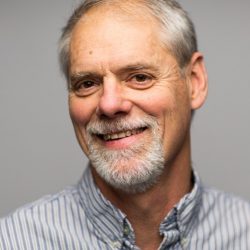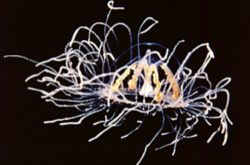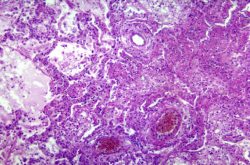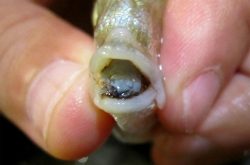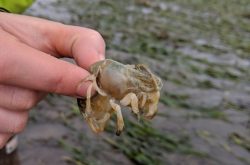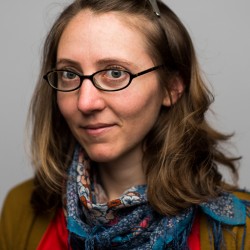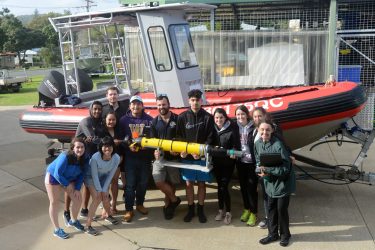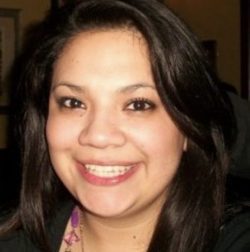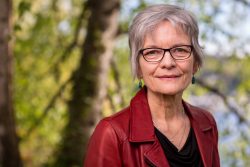
Dear colleagues,
Thank you to those of you who were able to join us for the State of the College at the Seattle campus on Wednesday, October 23rd.
In my address, I shared my thoughts on the great work we have done together, and I can’t emphasize the “we” in that statement enough.
Throughout the College, we have spent the last 10 years continuously evolving our science and growing its impact. Your efforts have helped to firmly establish the College as an institution that is renowned worldwide for transforming and advancing the way scientists take the pulse of the planet. From molecules to planetary systems, scientists at the College are translating their work to deeply engage others, ensuring that our research informs environmental policy, law and business, and culture. I am looking forward to the next two years, closing out my role as Dean, which comes to an end in 2021.
A year from now, the Provost will be assembling the search committee to identify the next dean. That may seem like a long way off, but we have already taken the first steps in succession planning. A key part of that planning is to reflect and look at where we have come over the past decade.
A College renowned for its impact on science and society
When the College was established in 2008, its mission was clear:
“The UW has an unparalleled opportunity to create a College of the Environment, that can significantly advance the fundamental environmental sciences. As one of the most respected public research universities, we have a responsibility, to tackle the most complex issues, of our time: sustaining and improving our environment.”
- Our diversity was and is our strength. But from the beginning, it’s also made things a challenge. At that time, there were different disciplinary cultures to accommodate, and each unit brought with it a different blend of teaching, research and service — and all of this coincided with the Great Recession! Since that time, the College of the Environment has evolved into a place where scientists and scholars are supported and where they can excel.
- We have acquired shared resources for fundamental environmental science. With research vessels like the Carson, shared state-of-the-art infrastructure such as ISO Lab, Ocean Observatories Initiative Regional Cabled Array and the Pacific NW Seismic Network along with facilities such as Friday Harbor Laboratories. The College is funding and investing in the tools and assets you need to teach, study and research successfully.
- We have created the perfect place for talented scientists to explore ideas in truly interdisciplinary ways. Our faculty, students and staff are forward-looking and building communities and pathways between the disciplines. The College builds on the UW’s rich history of collaborative interdisciplinary initiatives and we offer students opportunities for cross-unit teaching and learning through the Program on Climate Change and the newly launched Future Rivers National Science Foundation Research Traineeship.
The Dean’s office supports you in your quest for success.
- Helping you attract more resources, recognition and funding. The College of the Environment Marketing and Communications team shares stories of your research and its impact with audiences across the UW and the planet, and coordinates responses to emerging issues such as wildfires, climate change impacts and environmental crises. More than 25% of our faculty have elevated their communication skills through the Science Communications programs run by the College. And our stellar advancement team helped raise more than $30 million last year alone — funds that we use for some of our most risky and cutting-edge work.
- Helping you manage risks. We know that fieldwork needs to be safe as well as productive, and we are committed to keeping our people safe from all threats, be they crevasses, car accidents, or circumstances of gender harassment in the field. Through the GROE program (Graduate Research Opportunity Enhancement) the dean’s office can underwrite your funding risk while you have funding proposals pending, allowing you to attract the best people for your project and realize the greatest possibilities for your work. We’re also part of the solution when a building nearly burns down or a ship nearly sinks!
- Supporting engaged learning. The dean’s office helps faculty teach students in ways that they want to learn. Through deep collaboration between units within and outside of the College, we created the Marine Biology Major, which continues to attract talented undergraduate students to the marine sciences. Similarly, the Dean’s office made critical early investments in the MESSAGe program, led by Earth and Space Sciences, preparing students for working in non-academic environments.
Building on a strong history of public engagement on critical social and environmental issues.
- Producing science that is not just usable, but is used. The College builds on our strong history of public engagement that puts stakeholder needs front and center in our work. The Center for International Trade in Forest Products, CINTRAFOR, in the School of Environmental and Forest Sciences, serves the emerging needs of the sustainable building materials community by forecasting the demand for cross-laminated timber. Another forward-looking initiative is the Ocean Modeling Forum, a collaboration between the School of Aquatic and Fishery Sciences and NOAA Fisheries. The Forum brings quantitative fishery models together with the people who care about a particular ocean resource to decide what’s most important for its vitality and the communities it serves. The Climate Impacts Group has consistently served the region for 24 years, providing robust and relevant science to a wide range of communities and institutions affected by climate change.
- Addressing problems of growing complexity and scope. We are tackling global emerging issues through work right here in Washington state. When Ocean Acidification became a pressing issue ten years ago, our faculty moved quickly and decisively to re-orient their research programs to understand the problem and engage with industry and policymakers on solution paths. Today, the Washington Ocean Acidification Center provides a foundation for proactive strategies and policies to protect marine ecosystems and the people connected to them.
- Pushing the envelope through EarthLab. When I talk to faculty, whether early-career or our most senior leaders, they want more opportunities to push the envelope–in science and in engagement–on the wicked problems of our time. But innovation is inherently risky and needs a special type of nurturing and support in the context of the College. In 2019, EarthLab provided Innovation Grants totaling $250,000 to six teams working across units and campuses. The funds will be used to find creative ways to give knowledge, tools and a voice to communities not typically participating in the political process and yet most impacted by environmental issues. The Request for Proposals for the next round is open, so we’re looking to build on this success.
How do we protect this invaluable culture?
And, how can we build on it?
I believe we can sustain the College’s success by banding together to discover our areas of commonality and stay focused on society’s greatest needs. I feel strongly, that, with a leadership refresh, the College will move into the next decade renewed and strengthened.
You, faculty, staff, and students, play an essential part in bringing that vision to reality. As environmental scholars, we commit ourselves to understanding the world around us. Learning from each other, and building upon each idea. The College of the Environment represents millions of those ideas. Your ideas.
Let’s continue to share our ideas with each other and with the communities that have the most to gain from the advancement of our science.
This is our hallmark.
![]()
Lisa J. Graumlich
Dean, College of the Environment
Mary Laird Wood Professor





